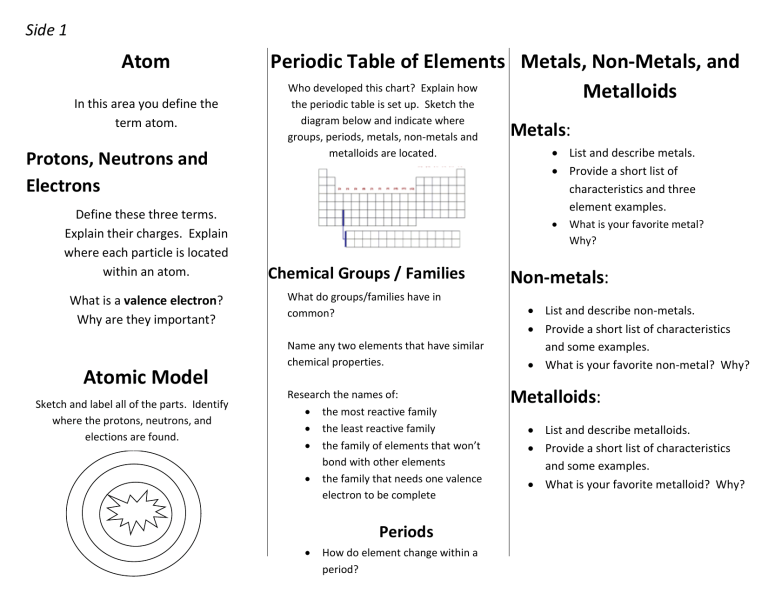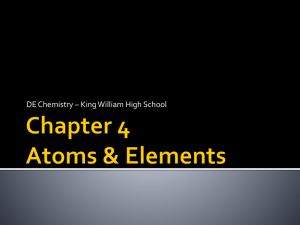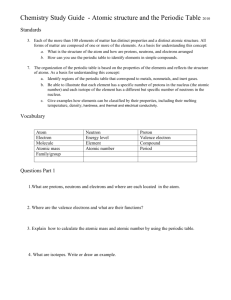Matter Properties and
advertisement

Side 1 Atom In this area you define the term atom. Protons, Neutrons and Electrons Define these three terms. Cells Explain their charges. Explain where each particle is located within an atom. What is a valence electron? Why are they important? Atomic Model Sketch and label all of the parts. Identify where the protons, neutrons, and elections are found. Periodic Table of Elements Metals, Non-Metals, and Who developed this chart? Explain how Metalloids the periodic table is set up. Sketch the diagram below and indicate where groups, periods, metals, non-metals and metalloids are located. Metals: List and describe metals. Provide a short list of characteristics and three element examples. Chemical Groups / Families What do groups/families have in common? Name any two elements that have similar chemical properties. Research the names of: the most reactive family the least reactive family the family of elements that won’t bond with other elements the family that needs one valence electron to be complete Periods How do element change within a period? What is your favorite metal? Why? Non-metals: List and describe non-metals. Provide a short list of characteristics and some examples. What is your favorite non-metal? Why? Metalloids: List and describe metalloids. Provide a short list of characteristics and some examples. What is your favorite metalloid? Why? Atomic Theory Chemical and Physical Properties and Changes Atomic Number Define this term. Select 10 elements and identify their atomic numbers. What is the difference between the atomic mass and atomic number? What isModels the difference Atomic Select any two elements between atomic numbers 1 – 18. 1. Draw each box from the Periodic Table. 2. ID protons, neutrons, and electrons for each. 3. Sketch the Bohr model (2,8,18) 4. Highlight the valence electrons in each model. Create a venn diagram contrasting physical and chemical properties. Include two examples of each in the venn diagram. Create a venn diagram contrasting pure substances and mixtures. Include two examples of each in the venn diagram. Title Page Matter: Properties and Change Study Guide Create a venn diagram contrasting physical and chemical changes. Include two examples of each in the venn diagram. Nameand Date Chemical Reactions Define reactant. Write out the chemical equation for photosynthesis. Highlight the reactants. Define product. Evidences of Chemical Reactions Evidence 1. Write out the chemical equation for respiration. Highlight the products. 2. Law of Conservation of Matter 3. What does the law state? Create a graphic to represent this definition. Create a mathematic/chemical equation to represent the Law of Conservation of Matter. 4. Description Example




